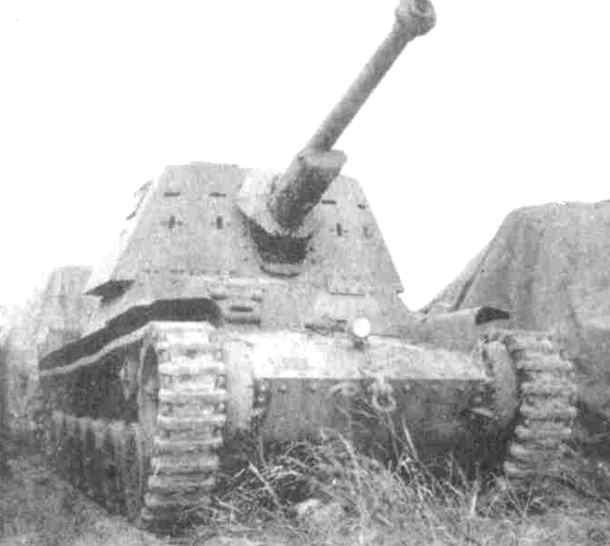明斯克卫星计划:日系TD计划浮出水面
17173 新闻导语
明斯克卫星计划:日系TD计划浮出水面
One might ask why it took almost two year (development started in December 1939 and acceptance was in October 1941) for such a simple vehicle to come out. As it turns out, clashes about the purpose of this “gun-**** (housensha)” was the main reason for the delayed development. At least there was the simple lack of any suitable anti-**** gun until 47 mm Anti-**** Gun Type 1 came along. Aside from this, there was the disagreement on whether this gun-**** should be purposed for anti-**** or artillery purposes. The anti-****/artillery argument was only settled after the decision to make a separate self-propelled gun armed with a 10.5 cm howitzer (Ho-Ni II) for pure artillery purposes, with Ho-Ni I providing both long-range direct fire and anti-**** capabilities with a modified 75 mm Field Gun Type 90.
有人会问为啥他花了两年才制造出这个坦克呢?事实证明,和“gun-**** (housensha)”的冲突是主要发展延迟的原因。至少缺乏一些合适的反坦克炮,直到47毫米反坦克炮1型出现。除了这个,还有gun-****是否应定意为反坦克炮或火炮的分歧。自决定制造一个独立的装备10.5厘米榴弹炮的自行火炮作为纯火炮后,该反坦克炮/火炮的参数进行单独设置,Ho-Ni I同时提供远距离直接瞄准射击和装备改良的75毫米野战炮的90式炮的反坦克能力。
Ho-Ni I served mostly with the 2nd Armored Division in the Philippines, where while it did not have a big impact on the battlefield, was still able to do its job sufficiently for such an outdated design. It was one of the few vehicles that could defeat a Sherman, with the veterans of the Japanese-Soviet conflicts carrying out camouflage and ambushes, managing to destroy M4 ****s from around 500 meters away. In the end, all Ho-Ni Is were destroyed, with only one example surviving in the United States.
Ho-Ni I大多与第2装甲师在菲律宾服役,虽然在那里战场上没有有很大的影响,但是这种过时的设计依然能充分完成其工作。这是为数不多的可以打败谢尔曼的车辆,日本和苏联冲突的退伍军人执行伪装和伏击,设法从大约500米开外摧毁M4坦克。最终,所有的Ho-Ni I被摧毁,只有一例存货在美国。

For the Imperial Japanese Army, however, Ho-Ni I was not enough. In order to solve the issues of crew survivability, a fully enclosed and armored casemate was made for the upgrade, Ho-Ni III, in 1943. In addition to this, with the case mate having its flanks protruding beyond the hull sides, it provided more room for the crew and the possibility of upgunning, although such upgunning never happened due to lack of resources. Also, the gun was changed to 7.5 cm **** Gun Type 3 Model II, a modified version of 7.5 cm Field Gun Type 90 for use in gun carriers. The breech was shorted by 300 mm to allow greater traverse (22° to each side) and elevation (-15°/+25°).
但是,对于****陆军来说,Ho-Ni I是不够的。为了解决乘员生存的问题,升级为全封闭和装甲的炮塔,也就是Ho-Ni III,产于1943年。除了这一点,在同样的情况下它车体两侧侧面突出来,他为成员和火炮升级改造提供了更多的空间,虽然这种改造因为资源不足从来没搞过。此外,火炮改为7.5厘米坦克炮3式II型,火炮载体上装备一个改良版7.5cm野战炮90式。菊花缩减300毫米来容许更大的水平射界(22°至每边)和俯仰角(-15°/+25°)。

Unfortunately, unlike Ho-Ni I, Ho-Ni III was kept on the Home Islands for the “Decisive Battle” against the Allied invasion, thus never being used in actual combat.
不幸的是,不像Ho-Ni I,为了对盟军的决战,Ho-Ni III是继续留在本土群岛,从而从未在实战中被应用。
This was just the beginning of Japanese **** destroyer development. While the beginnings were humble, the start of the Pacific War meant that Japan needed more powerful vehicles, and thus began rapid improvements…..
这是日本的坦克歼击车的发展的开端。虽然开始很卑微,但是太平洋战争的开始意味着日本需要更强大的车辆,并由此开始了迅速改善.....
This entry was posted inUncategorizedbySilentstalker. Bookmark thepermalink.